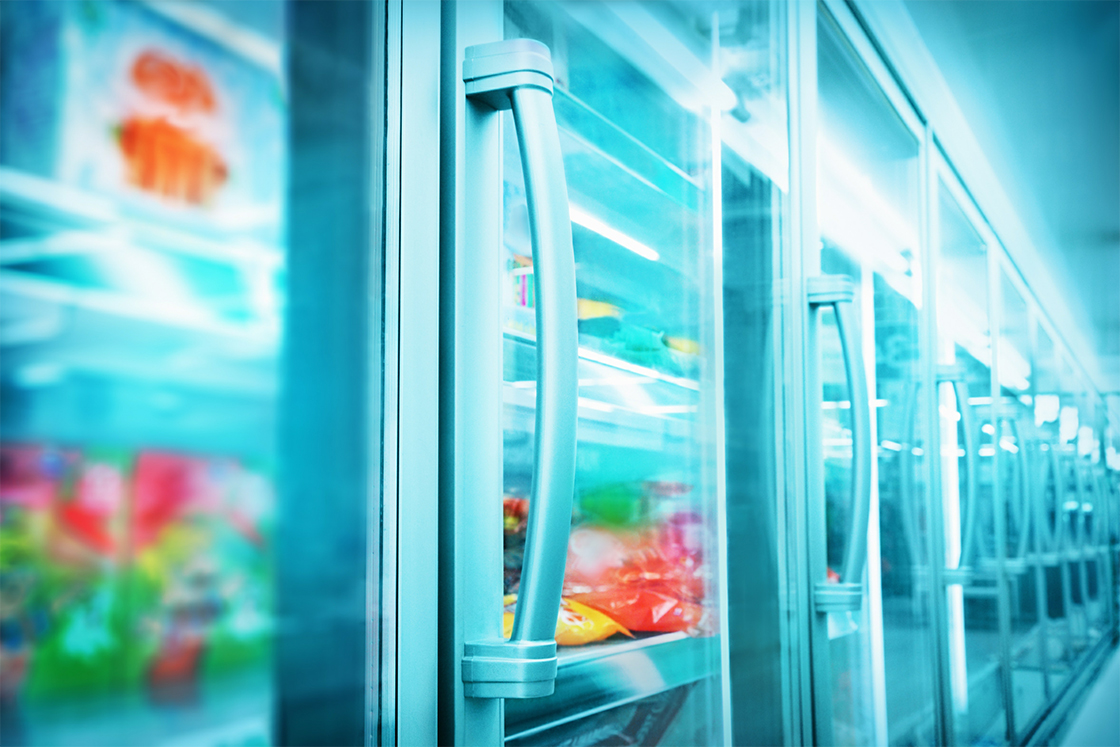
By Jürgen Fischer, President of Danfoss Cooling
It is estimated that 10% of all CO2 emissions are caused by cooling. Let that sink in for a moment. Our need for temperature control has a significant impact on our planet’s well-being and, with a growing population and increased urbanization, this effect can only be expected to rise. The good news is that the existent technologies and applicable solutions can make cooling a central part of the solution to reduce CO2 emissions, rather than one of the greatest contributors to global warming. To make this happen, we need to re-think cooling in the energy system and use cooling infrastructures, like supermarkets, as energy facilitators.
The United Nations expects the global population to reach 9.8 billion people by 2050. As the number of people on our planet increases so does the need for cooling. To avoid a vicious cycle where refrigerators and air conditioning contribute to global warming, in turn creating the need for more cooling, we need to think outside the box and make cooling more climate-friendly and sustainable.
Unlocking the full potential of renewables
Currently, the world is investing in renewables at an incredible rate. In 2017, for example, China announced that they would invest $360 billion in renewable energy by 2020. A recent report by the German Think Tank Agora Energiewende showed that, in the same year, electricity generated from renewables in Europe has for the first time surpassed energy generated from coal. While these are important first steps to satisfy the Paris Agreement, the full potential of renewables has not yet been reached. We still need better storage solutions to allow harnessing energy that is produced during off-peak hours, e.g. at night-time when the energy produced by windmills is higher than its demand. We also need advanced storage solutions to help provide energy when renewable solutions are not available, such as on days when the sun isn’t shining and the wind isn’t blowing.
So, what can we do?
Innovative storage solutions are the best way to even out irregular energy periods. They help to make the entire energy system much more flexible and reliable. The good news is that the technology needed to implement these kinds of storage systems is already available today and cooling plays a key role here. Existing buildings can provide thermal storage – in the form of ice or excess capacity from heating or cooling systems – and create exciting opportunities to promote flexible energy systems.
Supermarkets as sustainable energy facilitators
Your local supermarket is one of the best examples of how energy storage can provide the required flexibility for renewables to become a reliable solution. This is achievable through thermal storage.
Imagine that we connect ice storage or cold tower facilities to supermarkets. This would enable the storage of energy in the form of ice or cold water during low consumption hours. During peak hours, when the electricity system is under pressure and prices are higher, stored energy can be released to cool refrigerators and freezers to fit the high demand.
But that is only the beginning. More and better solutions are needed, and the industry is ready to help lead the way. We recently built a partnership that will help supermarkets become the premiere sustainable energy centres of their community.
Danfoss and SMA are planning a joint venture that will connect supermarkets to the energy system through an integrated solution that combines refrigeration technology, photovoltaics, energy storage technology, and e-mobility. This unique fusion of innovative technologies will allow supermarkets to be prosumers, and send their excess heat back into the energy system.
An example of this solution in practice is the process of recovering excess heat – a byproduct of the refrigeration process – to heat the supermarket. If the supermarket is connected to a district heating network, which is a trend increasingly popular in developed countries, the excess heat can be piped into other buildings in the neighborhood, drastically lowering energy costs and reducing the overall carbon footprint.
Energy efficiency is still key
While supermarkets and buildings, if connected, can become prosumers by producing energy over solar panels and provide flexibility to the energy system through thermal storage, it is still essential to keep energy efficiency in mind. By making buildings more energy efficient, we reduce energy demand and extend the benefits gained from using renewables — after all, they are not for free either. The International Energy Agency estimates that 38% of the required CO2 emission reduction needed until 2050 should come from energy-efficient technologies. Therefore, if supermarkets are to become essential energy reuse and storage centres in communities around the world, they should also leverage the newest technologies in order to unlock the full energy potential of their integration into the energy system.
Sources
- Birmingham Energy Institute (2016) “Clean Cold and the Global Goals”
- https://www.weforum.org/agenda/2017/08/how-china-is-leading-the-renewable-energy-revolution
